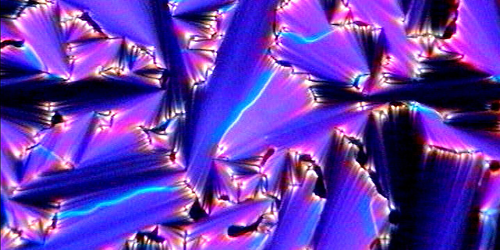Extending the Kibble-Zurek Mechanism
In 1985 Wojciech Zurek analyzed what happens when liquid helium rapidly transitions to its superfluid state. Spontaneous symmetry breaking, he predicted, would cause the superfluid to flow with a measurable, randomly directed velocity. The superfluid transition is second order, that is, gradual. Now Zurek and Fumika Suzuki—both of Los Alamos National Laboratory in New Mexico—have extended the 1985 analysis to accommodate first-order, abrupt transitions as well [1]. The extension portends the exploration of diverse and exotic phenomena in materials science, high-energy physics, and cosmology.
Zurek was originally inspired by Tom Kibble, who in 1976 examined what happens when fields that pervade the infant Universe spontaneously break symmetry. As the Universe cools, regions separated by more than the distance light can travel since the big bang acquire different values of the field. Domain walls, magnetic monopoles, and other topological defects can form where different broken-symmetry choices meet. Zurek realized that, as symmetry breaking happens in every phase transition, one can use its universal nature to calculate the density of defects in any system that undergoes the same kind of rapid, nonequilibrium quenching. Their joint theory became known as the Kibble-Zurek mechanism (KZM).
To extend KZM to first-order transitions, Zurek and Suzuki investigated what happens when the nature of a transition can be tuned between the second and first order. In a system that is weakly first order, as the critical point is crossed, parts of the system enter the new phase, while other parts retain the pretransition phase. Fluctuations initiate second-order transitions and are also responsible for nucleation, which happens in the first-order transitions. By focusing on the role of fluctuations, Zurek and Suzuki figured out how to modify KZM, enabling the prediction of defect density across the spectrum of first-order to second-order phase transitions.
–Charles Day
Charles Day is a Senior Editor for Physics Magazine.
References
- F. Suzuki and W. H. Zurek, “Topological defect formation in a phase transition with tunable order,” Phys. Rev. Lett. 132, 241601 (2024).




